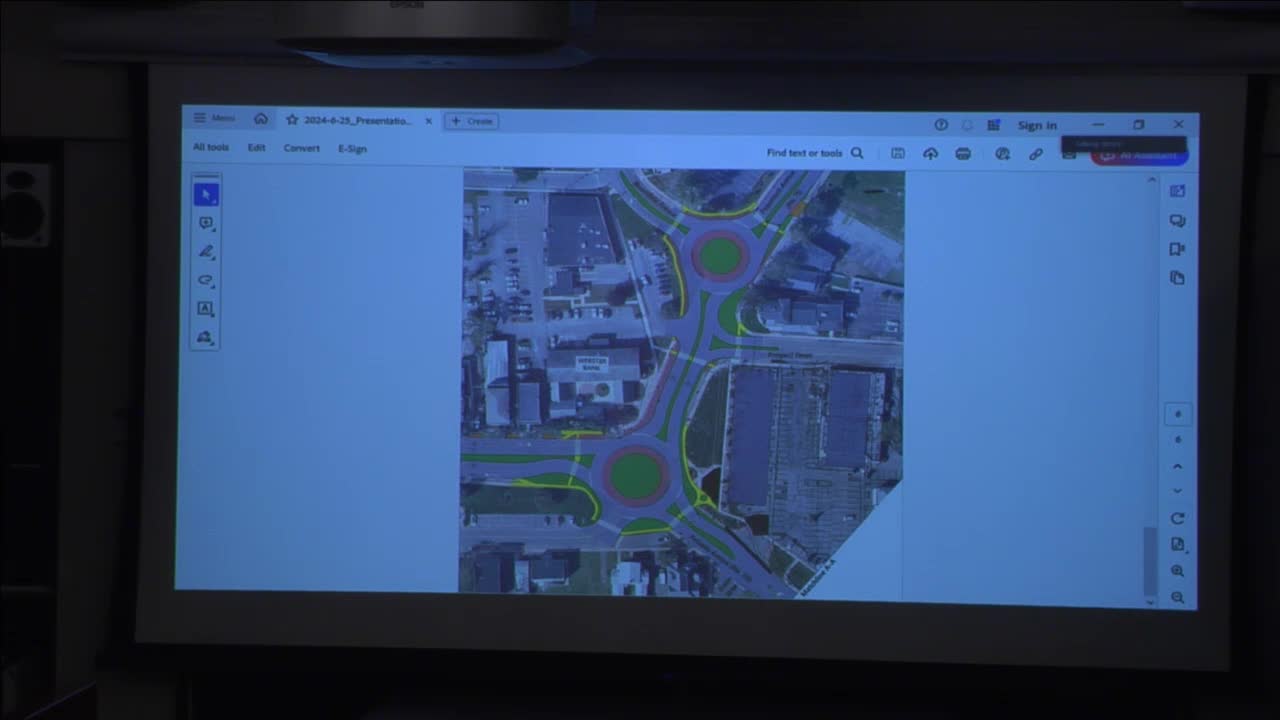Roundabouts spark debate over traffic safety and design
September 09, 2024 | Windsor, Hartford County, Connecticut
This article was created by AI summarizing key points discussed. AI makes mistakes, so for full details and context, please refer to the video of the full meeting. Please report any errors so we can fix them. Report an error »

In a recent government meeting, officials discussed the implementation of roundabouts in the town, addressing both design concerns and traffic flow efficiency. The dialogue highlighted the importance of educating drivers on roundabout navigation, as many American drivers are less familiar with their use compared to European counterparts. Concerns were raised about pedestrian safety, particularly regarding crosswalk placements and the potential dangers posed by vehicles accelerating out of roundabouts.
The meeting revealed two design concepts for the roundabouts, one featuring crosswalks around the entire circle and another with a single crosswalk positioned in the middle of the road. Officials clarified that the latter design was favored based on feedback from the Connecticut Department of Transportation, although some council members expressed apprehension about its safety implications.
Traffic modeling presented during the meeting indicated that both roundabouts and existing traffic signals operate efficiently, with average vehicle delays of less than ten seconds. However, roundabouts were noted to facilitate continuous movement, potentially reducing wait times at intersections.
The discussion also touched on the need for accessible pedestrian crossings, particularly for visually impaired individuals. While standard roundabout designs typically do not include traffic signals for pedestrians, alternatives such as hybrid beacons were proposed to enhance safety.
Council members expressed support for the roundabouts, emphasizing the need for further public education and consideration of local traffic patterns. The meeting concluded with a commitment to refine the designs and ensure that all community members, including those with disabilities, can navigate the new traffic systems safely.
The meeting revealed two design concepts for the roundabouts, one featuring crosswalks around the entire circle and another with a single crosswalk positioned in the middle of the road. Officials clarified that the latter design was favored based on feedback from the Connecticut Department of Transportation, although some council members expressed apprehension about its safety implications.
Traffic modeling presented during the meeting indicated that both roundabouts and existing traffic signals operate efficiently, with average vehicle delays of less than ten seconds. However, roundabouts were noted to facilitate continuous movement, potentially reducing wait times at intersections.
The discussion also touched on the need for accessible pedestrian crossings, particularly for visually impaired individuals. While standard roundabout designs typically do not include traffic signals for pedestrians, alternatives such as hybrid beacons were proposed to enhance safety.
Council members expressed support for the roundabouts, emphasizing the need for further public education and consideration of local traffic patterns. The meeting concluded with a commitment to refine the designs and ensure that all community members, including those with disabilities, can navigate the new traffic systems safely.
View full meeting
This article is based on a recent meeting—watch the full video and explore the complete transcript for deeper insights into the discussion.
View full meeting
